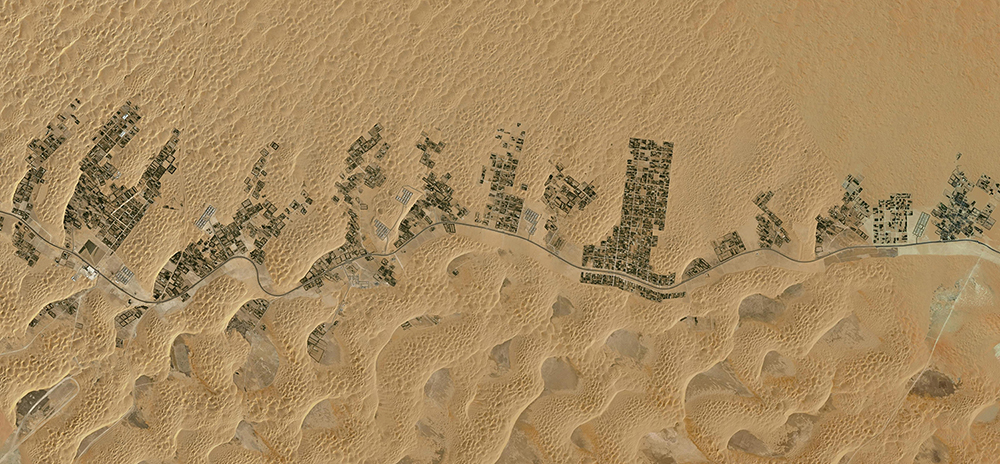|
|
Karim Elgendy
Under the blockade, Gaza is often likened to a prison, with poor and patched up infrastructure and declining sanitation. In May, the Israeli bombing of urban areas in response to Hamas rockets caused yet more devastation. But what is often overlooked is that with every war, indeed with every passing year, the environment in Gaza is becoming more fragile, and the ability of this small strip of land to sustain human life further eroded. As such, Gaza is a reminder to its neighbours of their serious environmental challenges and a warning of dire consequences if action is not taken.
Continue reading Canary in the coal mine: Gaza, the Levant, and climate change
Karim Elgendy
 Liwa date farms benefit from some of the freshest ground water in the UAE. Copyrights: Google Those who visit the Middle East and North Africa from more temperate climates are often struck with how hot and dry the region is, and how scarce its rainfall. Some wonder why cities became established here, and how they continue to exist despite the lack of renewable freshwater.
These concerns are not entirely groundless. Yet these cities’ existence is not in any way miraculous: it’s merely an example of what can happen if cities fail to strike a sustainable balance between growth and limited resources.
Continue reading How Sustainable is Your Oasis?: A Review of Water Resources in Middle East Cities
Karim Elgendy
In recent years much of the discussion about the impact of climate change around the world has caused a mix of anxiety and fear about the impacts this may have on human life and the environment. Many detailed studies have shown by using simulation models the impact of sea level rises on coastal cities around the world if sea level were to rise by a certain degree. These studies showed that generally speaking, it was low lying areas and river deltas that were most vulnerable, especially when these deltas are densely populated.
 Figure 1. Relative vulnerability of coastal deltas as shown by the indicative population potentially displaced by current sea-level trends to 2050 (Extreme = > 1 million; High = 1 million to 50,000; Medium = 50,000 to 5,000 (following Ericson et al.,2006). Source Nicholls, R.J., P.P. Wong, V.R. Burkett, J.O. Codignotto, J.E. Hay, R.F. McLean, S. Ragoonaden and C.D. Woodroffe, 2007 Continue reading The Impact of Sea Level Rise on The Arab World
|
|



